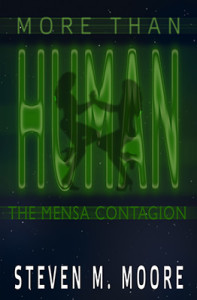Places…
Settings are important in fiction. They represent the stage where the fictional drama takes place. Some of mine are real; some I imagine (the ET settings are obviously creations of my imagination); and some that seem real aren’t (Google Maps and Google Earth are an author’s useful tools, though). You can have some fun trying to guess what places I’ve actually visited (probably more than you think).
Most of Chen and Castilblanco’s cases begin in NYC, which I know well enough; it’s just thirteen miles east of us via NJ’s Route 3 and the Lincoln Tunnel, but those cases often expand beyond NYC and the tri-state area to the rest of the US and abroad. I know Europe fairly well too, as well as South America, Canada, and Mexico. My travels allowed me not only to learn about our wonderful human diversity (although my home state of California has plenty), but also to learn about different places.
But what I don’t know, I can imagine. If you’re going to write fiction, you need imagination You can write non-fiction without it…maybe…but it’s absolutely necessary to have an imagination to create places you haven’t yet visited, or characters living in those places, so that the fiction seems real to the reader.
One of the most interesting places I’ve visited is Ireland. In addition to being sort of an ancient homeland (for this half-blooded Irishman), it’s just a fascinating place. It’s also where I met A. B. Carolan, my reclusive collaborator, at a place called Blarney Castle (storytelling needs a lot of blarney as well as imagination). It’s odd that it doesn’t appear much in A. B.’s or my stories (his are sci-fi tales, of course). In Palettes, Patriots and Prats, there are a few scenes, and it’s rumored that Esther Brookstone had a wee fling there with some Irishman in Kilarney, but that’s not where those stories take place. In a novella that ends tomorrow, Declan O’Hara, the main character, is from Donegal, like A. B., but maybe subconsciously I haven’t wanted to spoil lovely Eire by putting lowlifes, ETs, or androids from my fiction there?
South America figures prominently in my fiction, though; I’ve both lived and traveled there. Colombia was home base for many trips to conferences in the US and Europe where I spent a lot of time before and after such events traveling and meeting people. I had two long stays in Italy and Spain as a visiting scientist that also served as bases to tour Europe, where you can hop on a train in the evening, sleep the night away, and wake up in a new country.
Perhaps the most obvious influence of my travels on my fiction is found in Death on the Danube. The book’s plot (except for flashbacks) follows a real and wonderful riverboat cruise (without any murder taking place, of course) down that ancient waterway. It would have been hard to imagine that itinerary on my own.
Authors should take advantage of such travel whenever possible. The more real the places in our prose seem, the more our readers will feel that they are experiencing new or remembered places too. That’s all part of the great adventure readers can find in books.
***

Comments are always welcome.
More than Human: The Mensa Contagion. Apocalypse and first contact are two ubiquitous sci-fi themes. I like to stir conventional themes and plots up a bit, though. Here first contact comes via an ET virus that kills at first (an apparent apocalypse that’s worse than Covid) but benignly creates Homo sapiens, version 2.0. What do these new humans do? They colonize Mars and later meet the makers of the virus, in a manner of speaking (this isn’t your normal first contact). You’ll have some fun with this one, and, like many sci-fi novels, it will make you think about possible futures. Available wherever quality ebooks are sold.
Around the world and to the stars! In libris libertas!
